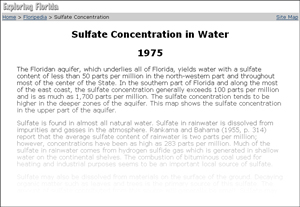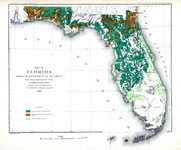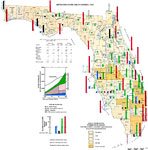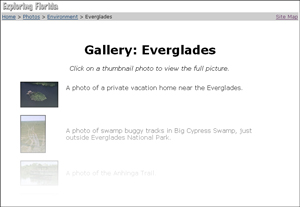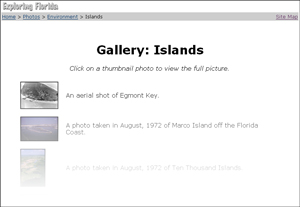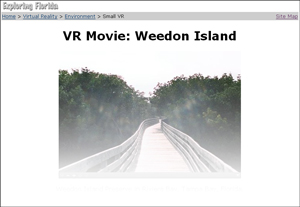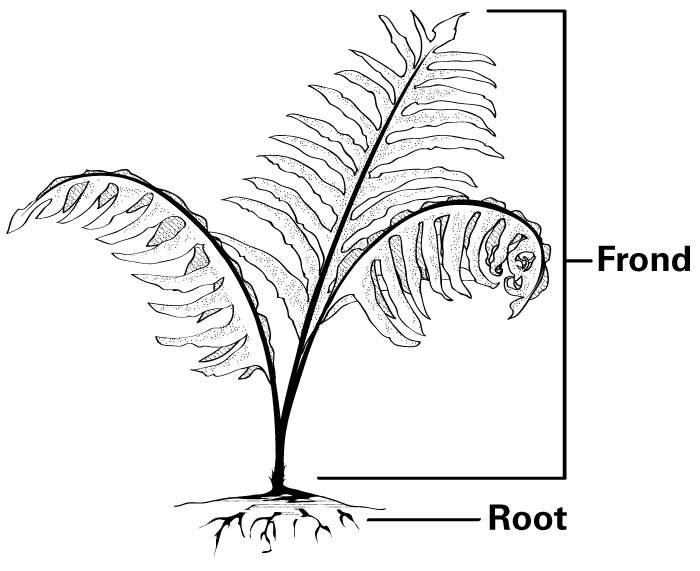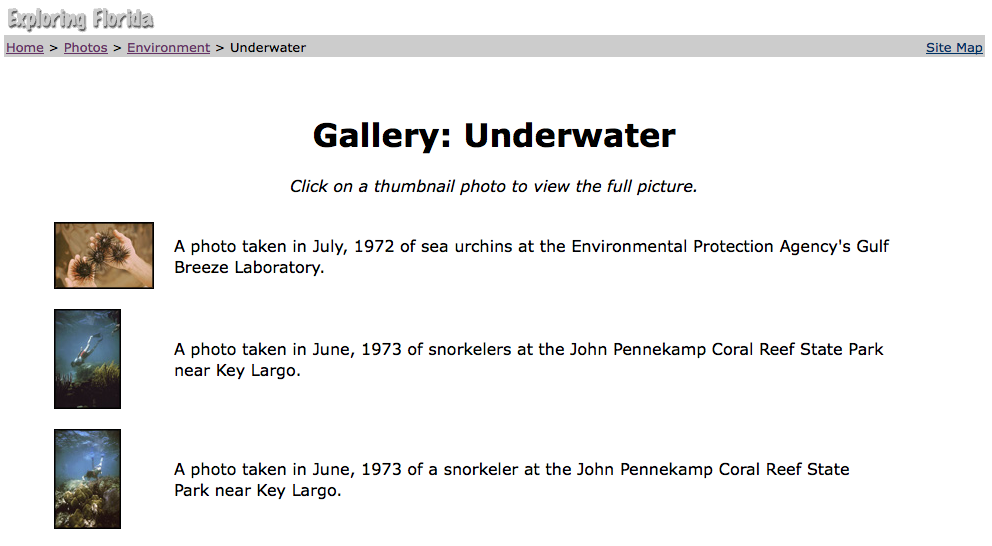Module 4: Using Exploring Florida in the Science Classroom
This module provides examples of ways teachers in grades 6-12 science classes can bring the digital resources from Exploring Florida into the hands of students in classroom activities that support the science standards. Resources include a range of activity ideas, each of which addresses one or more science standards and which makes use of one or more digital resources in a student-centered approach.
Contents
To link the content links place a named anchor tag around the Header you wish to link to. For example:Item 1
-->StorybookBack to top
The storybook feature of this module shows how Exploring Florida resources can be used in the science classroom. If desired, this feature can be projected in the classroom.
Content and LessonsBack to top
These student activities relate to grades 6-12 science standards and integrate digital resources from Exploring Florida. Teachers are invited to adapt these ideas to meet the needs of their students and their educational context.
Sulfate Concentration in Drinking Water
Students will use FCIT resources to compare current levels of sulfate in drinking water to past levels. Multimedia extensions for this activity are suggested.
Tracking Hurricanes
The class can create a blog for predicting hurricanes and/or weather. Each student will be responsible for making predictions based on scientific data. The first part of the year, the teacher can post sample blog entries and teach a few of the students the way the postings should be written and they in turn can teach other small groups, etc.
Florida's Trees
Students will choose and research a type of tree that grows in Florida. They can then create a website that describes the tree.
Florida's Water Use
Students will compare water usage and population levels from historic data to the present day. Students can also forecast to predict future water usage.
What's a Sinkhole?
Sinkholes are quite common in west central Florida. Teachers can use FCIT maps of sinkhole occurances in Hernando County from 1948-2007 to show where sinkholes occur and initiate class discussion. Students can create an i-movie on a particular aspect of sinkholes.
Time Capsule
Have students make a video time capsule of the Everglades. Pretend the students are opening the capsule now, but it was made 100 years ago. What was the population of Florida, and what were the major natural disasters around that time? Were there any recorded hurricanes during that time? Which part of Florida was most populated during that time? Was anyone growing anything during that time?
My Favorite Tree Scrapbook
Students will use FCIT resources to research a favorite tree's life cycle - lifespan, average height, leaf shape, water requirements, etc. They will then create a scrapbook of a particular tree's life.
Eco-Activism
Students can make a video plea for the protection of beaches using the gallery of photos. Describe the protection of the mangroves, sea oats, etc. and the balance of the eco-system. Focus on one particular beach and be sure to give sand erosion facts, etc.
Explorers Return
Pretend that you are an explorer like Lewis and Clark. You have returned from visiting Weedon Island and must show your findings to your benefactors. You must identify the plants, wildlife, weather, and soil conditions of this area. Decide whether you want to convince your benefactor to colonize the area, or if you would like to protect the area. Do this using stills, videos in i-movie or powerpoint. Provide audio by making a podcast in Garage Band.
Florida Ferns
Students will research a particular type of fern (or group of ferns) found in Florida and create a powerpoint presentation/web site detailing the plant's lifespan, requirements, etc. Students will also discuss the pros and cons of this plant in the Florida ecosystem and its potential use (documented by scientific research) for cleaning air and soil. After completing this presentation, students will grow their own ferns from spores/starter plants and document the progress of growth.
Florida Birds, 19th Century to Present
The purpose of this assignment is to determine the environmental landscape of the late 1800s - early 1900s in Florida and compare it to today's landscape. Groups of students can choose from different areas (Okeechobee, St. Augustine, Tamps Bay, Panhandle) and identify some of the more common birds that might have been seen there in the past era, as well as today. Each group will need to write a 3-5 page paper discussing the area, the birds, and their purpose.
John Pennekamp Coral Reef Park and the Florida Keys
The purpose of this assignment is to discuss the formation and existence of the Florida Keys and its sea life. This project would be a year-long project with a field trip culminating at the end of the year to the John Pennakemp park. Part One discusses the history and formation of the Florida Keys and their purpose as a landmass. Part Two discusses the wildlife and sealife of the Keys and the human population. Part Three discusses the potential issues surrounding the Keys and its natural habitat (polluted waters, hurricanes, rising sea water, population growth, tourism, etc.). Part Four would culminate with the class deciding the best course of action with regards to the Florida Keys (protect, use and discard, etc.).
Florida Caverns
Students will learn about the formation of caverns, both in Florida and along the East Coast. Students will also be able to identify parts of a cave and their significance in our ecosystem. Students will research the Florida Caverns and create a videolog pretending to be settlers or Native Americans who needed to use the caverns. Students will describe the exterior and interior and why they chose the cave versus another safe area.
Estimated Water Use
Students will use maps to compare Florida's water usage in 1965 to present consumption levels. Students can make podcasts to address the issue of whether (if any) water conservation measures are necessary.

